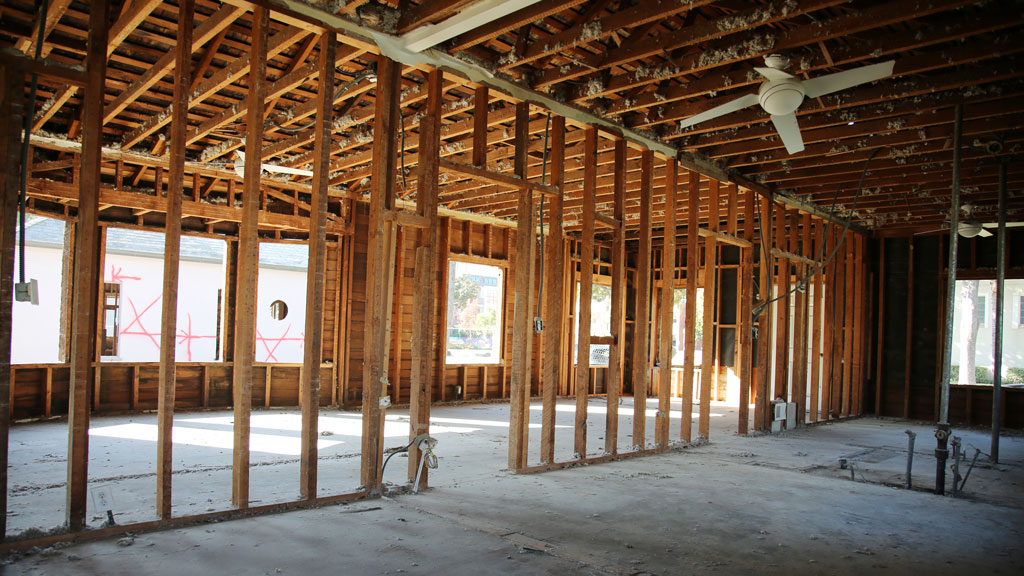BC Housing, a Crown corporation that develops subsidized living quarters, has created a strategy for sustainable buildings called Design for Disassembly (DFD).
DFD makes it easier to modify or dismantle a structure and recover its building materials so they can be reused.
BC Housing’s DFD strategy has three goals: To simplify the deconstruction process; reduce the time and cost of deconstruction; and enable the maximum recovery of construction components and materials.
DFD principles cover all building components, including structural elements and finishing products as well as mechanical, electrical and plumbing systems.
The details of BC Housing’s DFD strategy are contained in a report called Design for Disassembly for Residential Construction.
The document was prepared for BC Housing by the Light House Sustainability Society, a Vancouver non-profit that works “to inspire new ways of thinking about sustainability within the built environment.”
The report contains a list of resources for designers and architects they can use to implement DFD principles, especially the opportunities to use wood.
We want to create an industry for salvaged goods and opportunities to create a circular system where materials can be integrated into the design of new buildings,
— Design for Disassembly for Residential Construction report
It notes wood is an important building material in B.C. It is locally available and it economically benefits communities across the province.
“Wood in construction also has the environmental benefit of sequestering carbon for decades. With its high potential for reuse, we can extend that sequestration to centuries.”
BC Housing said it hopes its support for DFD encourages the construction industry to see buildings as a store of materials that can be harvested for reuse.
“Doing this could dramatically reduce the amount of waste that is produced.”
In Metro Vancouver, for example, the construction and demolition industry reportedly produces almost one-third of all the waste that goes to the landfill.
Although more material is being sent to recycling facilities, processing it uses up valuable resources.
On top of that, most of the products that are made from the recycled materials soon end their days in the landfill.
“With this in mind, we want to create an industry for salvaged goods and opportunities to create a circular system where materials can be integrated into the design of new buildings.”
Although DFD is not new, the report said, its adoption by the construction industry and the manufacturers that supply it has been slow.
“North American construction methods favour speed and low-cost over the recoverability of materials.”
However, said Denisa Ionescu, senior manager of research and education at the BC Housing Research Centre, DFD has begun to enter the construction mainstream.
For example, Ionescu said, the International Organization for Standardization recently adopted a standard for building disassembly.
ISO 20887:2020 provides an overview of design for disassembly and adaptability principles and strategies for integrating them with the design process.
“A couple of examples of DFD principles being applied now are modular construction and prefab construction,” said Ionescu.The Design for Disassembly report cites the example of Vancouver Affordable Housing Agency’s (VAHA) use of modular construction to respond quickly to the need for affordable housing in the city.
The City of Vancouver lets VAHA use vacant and unused public land for temporary modular housing developments.
The projects are guaranteed the use of the land for at least three years.
When the land is needed for a more permanent use, the housing units can be disassembled and relocated.
Because minimum ground disturbance is required, the facility can be located on possibly contaminated brownfield sites that would require extensive remediation work before construction of something more permanent.
VAHA’s first modular housing project is a 40-unit building on Terminal Avenue, in a former industrial area east of downtown.
“Modular housing is typically faster to construct and deploy than a traditional construction alternatives,” said VAHA CEO Ryan Bigelow. “It benefits from controlled manufacturing environments and has provided immediate relief to hundreds of people in Vancouver who live without a home.”
One of the early adopters of DFD in Vancouver is Unbuilders Deconstruction and Heritage Lumber.
“We unbuild residential and commercial buildings by hand and salvage almost everything, including old growth lumber, windows, doors, cabinets, fixtures and appliances,” said Unbuilders founder and CEO Adam Corneil.
“Unbuilders maximizes the material salvage to minimize the cost, hassle and environmental footprint. The salvaged goods are then donated to charity, which generates a tax receipt for the building owner and reduces our cost below what it would cost to demolish the structure.”











Recent Comments
comments for this post are closed